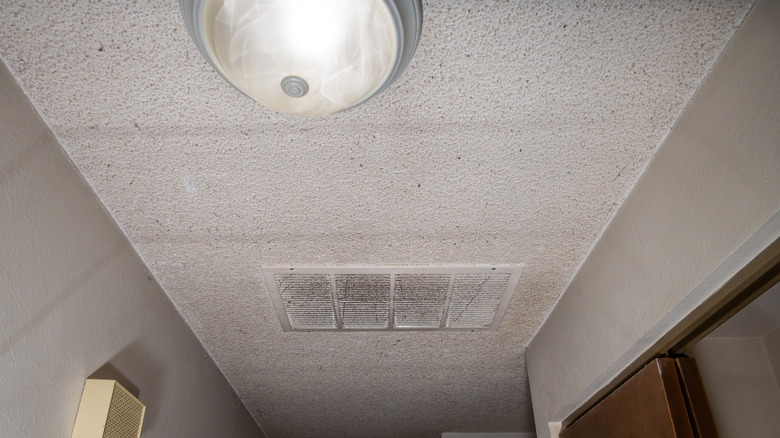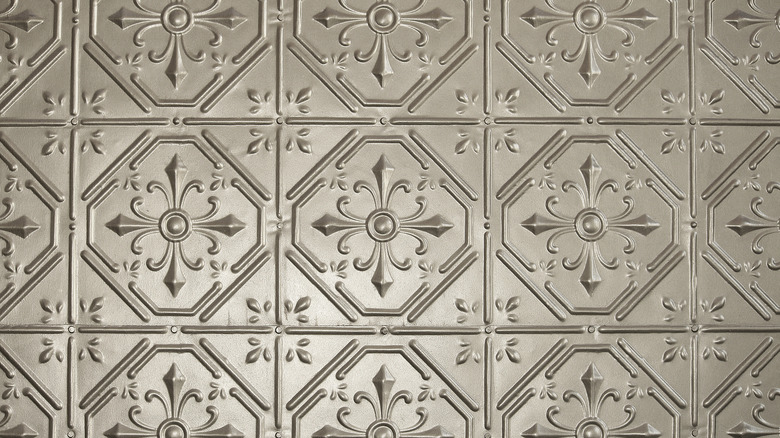The Affordable Type Of Tile That Will Easily Cover Up Your Popcorn Ceiling
Popcorn ceilings, the nubby bane of many homeowners, became popular after World War II. They were easy to create, added interest to a room, and covered minor flaws in the ceiling. Scraping the texture off the ceiling is a time-consuming process that can be dangerous because, until the early 1980s, many contained asbestos. It's possible to test your popcorn ceiling for asbestos, but covering them rather than removing the texture isolates the asbestos, eliminating the need for professional abatement. Some methods, like installing a drywall ceiling to cover the texture can be costly, especially if you need to hire an expert to do it. A more affordable and easy-to-install option is decorative styrofoam ceiling tiles.
If you don't want to say good-bye to your popcorn ceiling by removing it, tiles might be your best choice. They come in a wide range of materials, colors, and patterns, and some have the added benefit of being acoustic or sound-dampening. They're typically one foot by one foot, two feet by two feet or two feet by four feet in size. Styrofoam tiles, often the most economical choice, have all the same attributes as their more expensive wood or tin counterparts. Unlike the system used in drop ceilings, where the tiles are supported by a grid of metal supports, styrofoam tiles are usually glued directly to the ceiling. Consider adding styrofoam crown molding, another economical choice, to hide any irregularities where the new tiles meet the walls.
Styrofoam benefits and design options
Styrofoam ceiling tiles are not only a visually pleasing alternative to popcorn ceilings; they're also easy to clean and long-lasting when they're properly installed and maintained. The acoustic versions deaden sound, they're durable, and have some thermal insulating qualities. If you can't find the color you want ready made, they can be painted with a water-based latex, but before you do, check to see if the manufacturer has a preferred method for painting them. Keep in mind that it's easier to paint the tiles before installing them, and just touching up with a brush wherever it's needed when you're finished. Consider painting the tiles, even if you're using white tiles, if your room has low ceilings. Any flaws in the tiles will be more noticeable in a low-ceilinged room.
Installing styrofoam tiles is straightforward. Scrape any damaged pieces of popcorn off the ceiling, then use a chalk line to make a line from wall to wall along the center. You'll use this line as a guide for the first row of tiles. Apply a generous amount of styrofoam adhesive to the back of a tile and use the chalk line as a guide for placement. Continue gluing tiles, first using the chalk line as a guide and then using the tiles you already installed until you get to the edges. It's unlikely that the tiles will perfectly fit the ceiling, so use a sharp box knife and a straight edge to cut tiles to fit the remaining spaces. If you've chosen to leave seams between the tiles, use a caulk you can paint over to hide them.

